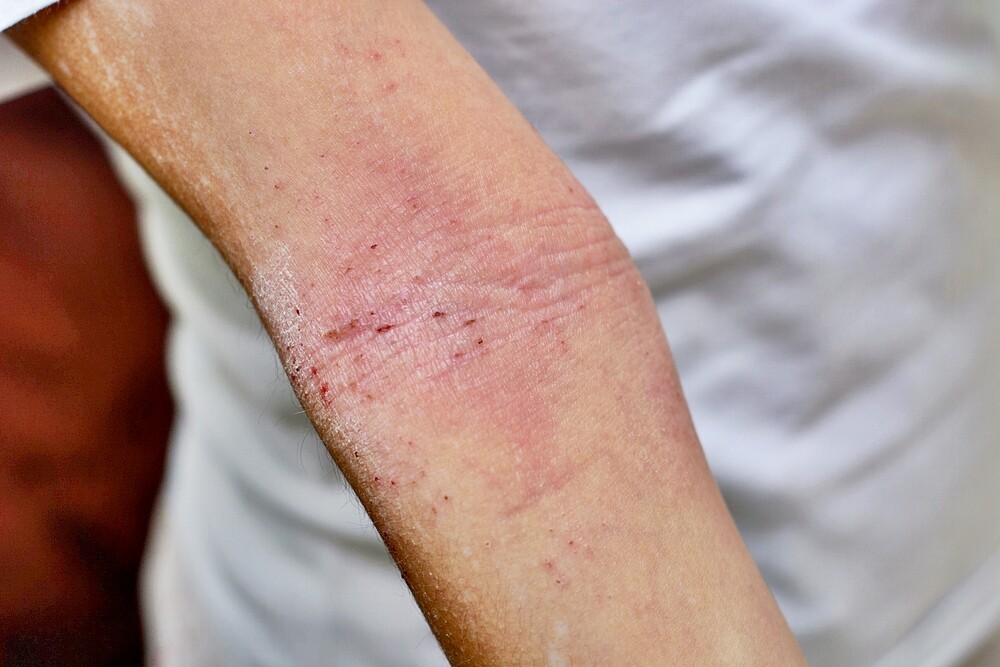What are the causes of a skin rash? How does it manifest itself? And what treatments can I use to get rid of it? That’s what we are telling you here!
What causes a skin rash?
A skin rash (exanthema) can indicate various illnesses and can become noticeable through symptoms such as itching or hives. In order to find the right treatment for the rash, the cause must first be identified. The respective form of the rash can provide information on this.
Why can reactions occur on the skin?
Our skin is not only our largest organ, it also functions as a protection against external influences. It is not for nothing that we are said to have many a disease at the tip of our nose: If we do not feel well, our skin can turn pale or grey – or even react with a rash. Depending on the underlying disease, this rash can be differently pronounced. These forms occur frequently:
- Brownish, white or red spots
- Stippchen or garlands
- Quadling
- Purulent pustules
- Nodules
- Bubbles filled with liquid
- Swelling
It is often said that the rash “blooms” or “seeds” on the skin. Skin rashes can appear almost anywhere on the body, especially often on the hands and feet, on the joints (especially elbows and knees) and on the insides of the forearms and legs.
What are the symptoms of a skin rash?
Apart from external changes such as spots or wheals, skin rashes are most often accompanied by itching. However, there are numerous other symptoms. Among these are:
- Burning or stabbing pain
- Sweating
- Breathing difficulties
- Fever
- Nausea
- Cough or rhinitis (due to allergy)
- Swollen lymph nodes
- Dry skin
What causes can the skin rash have?
Besides an allergy as the cause, a rash can often be traced back to a skin disease (eczema), for example urticaria. The following general triggers are possible:
- Neurodermatitis
- Hives (Urticaria)
- Psoriasis
- Insect bites
- Acne
- Stress
- Viral infections such as shingles, herpes, glandular fever, viral hepatitis
- Bacterial infections such as scarlet fever or Lyme borreliosis
- Tropical diseases like dengue fever
- Side effects of medication
- Allergic reaction or intolerance (e.g. hay fever or histamine intolerance)
- Fungal or parasitic infestation
- Chickenpox, measles, rubella, three-day fever, hand-foot and mouth disease (in children)
However, there are also rather harmless causes of stains, wheals and the like, for example a new cream or scratchy clothes. As a rule, the complaints subside if you avoid contact with the relevant triggers.
When do I have to see the doctor?
If the rash is sudden and severe, if the cause is unclear, if the affected area is very painful, if accompanying symptoms occur or if the rash changes, a doctor should clarify the causes. Because of the many possible triggers, it is not always easy to make the right diagnosis. Depending on the suspected cause, an allergy test (prick test) can also be carried out.
Treatment: What to do against the skin rash?
The treatment depends on the cause. For example, antibiotics can be used for therapy of bacterial infections, and antihistamines for allergic triggers. Fungal infections can be alleviated with certain antifungal agents. Cortisone is also used particularly frequently to treat rashes, for example in the form of ointments.

